Live photos of Nokia 3600 Slide
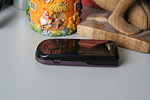 | 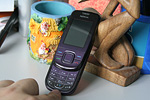 | 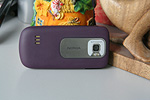 |
Table of contents:
- Positioning
- Design, size, controls
- Display
- Keypad
- Battery
- Memory, Memory cards
- Performance
- Camera
- USB, Bluetooth
- Themes, applications, games
- Impressions
Sales package:
- Handset
- Wired stereo-headset (HS-47)
- Li-Ion battery (BL-4S)
- Charger (AC-4)
- USB data cable (CA-101)
- 512 Mb microSD memory card
- User Guide
Positioning
The 3600 is the entry-level end of the “Beautiful To Use” series whose only purpose is to be an “ordinary” slider with run-of-the-mill spec sheet, which may well take it to the top of sales charts with time. As opposed to Samsung, Nokia has never had a particularly strong slider line-up, in fact, just like other makers, the Finnish manufacturer entered this segment somewhat reluctantly. But things are about to change in a big way in 2008 – the turn-around is signified by the launch of the 75-Euro Nokia 2680 Slide, which is Nokia’s cheapest slider-type offering among their latest and greatest models. In its turn, the Nokia 3600 Slide targets a different segment, while being in keeping with other Nokia-branded sliders looks-wise. This handset has been brought about for those who are after primarily the phone aspect of their device (S40 platform) and wouldn’t mind an okay camera along with adequate functionality. Putting it differently, the 3600 Slide is for those who despise smartphones for some personal reasons or don’t want to pay a premium for features he will never have a chance to put to good use.


As far as Nokia’s market segmentation goes, the 3600 Slide falls under the “Connect’ category, in other words it’s a device positioned towards the youth (18-26 year olds) who are keen on going out. For the most part this aims at women, which is due to Samsung’s sliders being popular with this demographic.

Design, size, controls
The 3600 Slide’s rounded shapes and soft lines can well provoke some memories of the Siemens SL55; however it’s more of a random impression that we had – Nokia’s design hasn’t been taken over from anywhere, and it takes no design cues from the SL55, make no mistake about that.
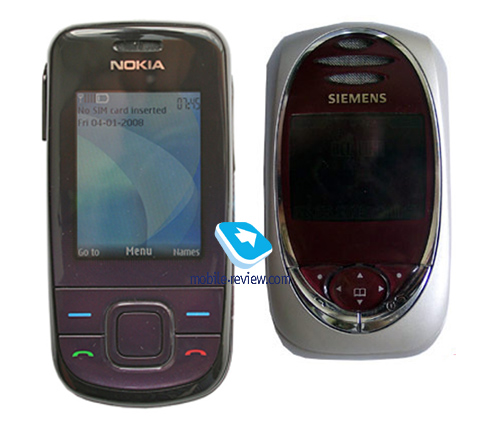
The handset comes in two flavors – Charcoal and Wine. In either case the front fascia, which is monotone, defines the color scheme employed by the phone. The 3600 Slide’s surface is glossy and very easy to soil, although these smudges aren’t very discernible even in bright light. On the back, however, the 3600 is clad in light-colored rough plastic that feels exactly the same as that used in the Nokia 6220 Classic’s battery cover. Over at Nokia they call this material “ceramic”, and indeed it feels like it. But it’s important to realize that it’s just another way to coat plastic, similar to “soft touch”, which this new type looks to replace. The hues of the battery cover vary depending on the phone’s trim, but in both cases they are pretty bright and don’t pick up fingerprints at all.

The handset measures up at 97.8x47.2x14.5 mm and weighs in at 98 grams –it’s pretty portable and readily slips into just about any pocket. All in all, it’d better to characterize it as a typical no-frills slider without any crucial glitches in ergonomics.



Perched on the back is the 3.2 Mpix camera lens and a metallic frame around it. Also armed with metallic accents is the inside of the phone’s sliding portion. On the left there is a microUSB socket covered by a rubber flap, while on the right you will find the volume rocker along with the dedicated camera button. The 3600 Slide’s top is occupied by the power button and 2.5mm audio jack, as well as the 2,, charger port.
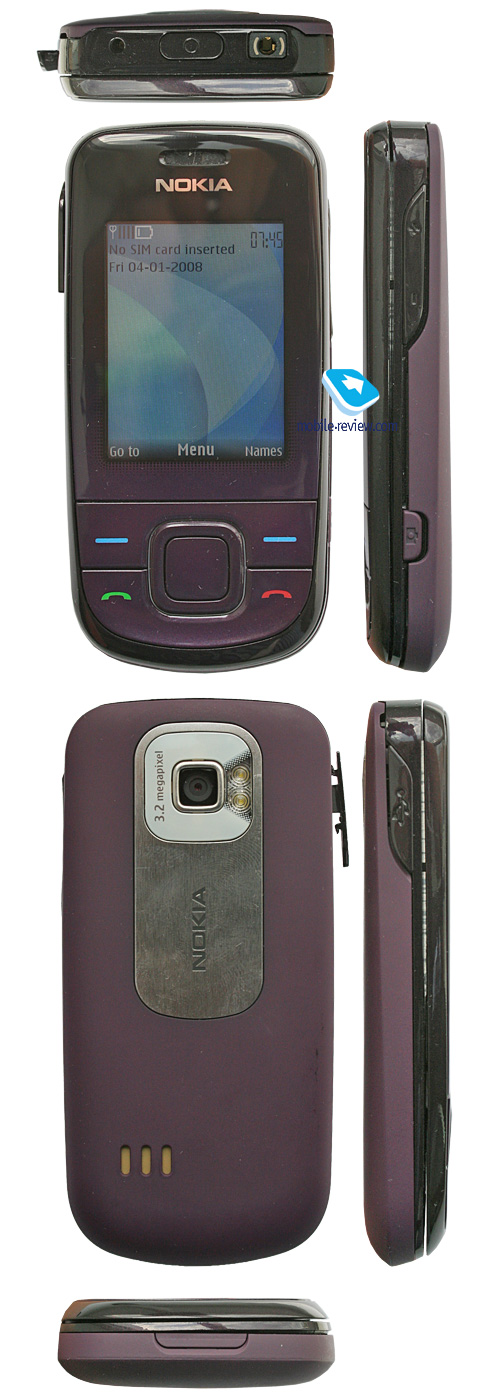


Display
The 3600 Slide’s display is a 2-inch 240x320 pixel TFT-powered unit (31x42mm), capable of 16 million colors. The display accommodates up to 8 text and 3 service lines all written in a very readable font. Just like you’d expect, you can alter the font size in certain menus (like Messaging, where amplified fonts are much more suitable). The display’s brightness is taken care of by the ambient light sensor, plus you can turn to the settings menu too.


Keypad
There is nothing special about the 3600 Slide’s glossy and soft buttons; we are also pleased with the way they are positioned on the phone. All in all, the only thing we aren’t particularly happy about is its quite dim backlight, but every phone has its crosses to bear.


Battery
The handset utilizes a 860 mAh Li-Ion battery (BL-4S), rated for 280 hours of standby and 5.5 hours of talktime. In Moscow the 3600 Slide lasted around 2 days at 3 hours of calls and up to 5 hours of music. It takes the battery just shy of 2 hours to charge from empty to full.


We got a shade more than 10 hours and 5 minutes of continuous music (at maximum volume settings in earphones) with the 3600 Slide.
Memory, Memory cards
The microSD memory expansion slot (cards up to 8 GB are supported) is perched underneath the battery. The handset also comes equipped with 30 Mb of built-in memory.

Performance
The phone is a typical offering for its generation – no bells and whistles here. Compared to Sony Ericsson’s solutions, the 3600 Slide is quite a mediocre performer.
Camera
The 3600 Slide enjoys a 3.2 Mpix CMOS autofocus-enabled camera, that is exactly the same as that used by the Nokia 6500 Slide.

The following resolution settings are supported:
- 1536x2048;
- 1200x1600;
- 960x1280;
- 480x640;
- 240x320;
- 120x160.
Also, three JPEG compression level are available: basic, normal, high. Speaking of other options, you can adjust the shutter sound (on/off), play with the 3600 Slide’s x8 digital zoom, choose between the built-in memory and memory card as the default place to save all images in, and modify white balance settings, ISO level, etc. Overlays may be applied to all snaps, so whether it’s worth using them before shooting or not – it is all up to you. The following effects are available with the phone: Greyscale, Sepia, Negative.
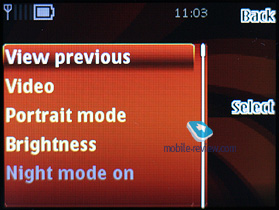
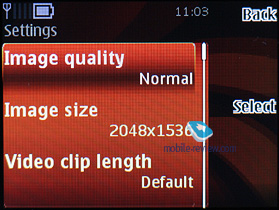
For those keen on multi-shot mode, there is an option in the 3600 Slide that makes the camera take up to 3 shots in rapid succession, with all settings being identical to the single-shot mode, including resolution. There is also a 10-second self-timer.
The camera interface employs landscape layout, which looks really reminiscent of the Series 40v3 devices, so there is nothing new we can tell – everything is pretty straightforward and intuitive, however the ergonomics are still a few steps behind Sony Ericsson’s multimedia smartphones.
Video. The handset allows recording video in 3GP format, available resolutions – 128x96 pixels, or 176x144, 352x288, 640x480 pixels. There are three quality settings available for the 3600 Slide’s video mode; apart from that you can limit any recording’s length, or opt to record until the memory runs out. The effects enabled for videos are no different from what you can use for still images. All in all, video clips look okay when watching them on the handset’s screen, however when it comes to watching them on PC you will certainly spot some artifacts and glitches here and there. Nonetheless, we found it easy to live with this, since the 3600 Slide’s videos still looked like a sizable step forward compared to its predecessors. When shooting in 352x288-pixel resolution, the 3600 Slide offers better quality that than put up by Samsung-branded solutions all thanks to its more natural and vibrant colors. And since video is no the Nokia 3600 Slide’s centerpiece, we find its video recording abilities more than satisfactory.
USB, Bluetooth
USB. The Nokia 3600 Slide comes with the microUSB socket, housed on the left edge of the phone. This socket is used for plugging in a data cable or headsets (the phone starts charging up when connected). The vendor says the handset supports USB 2.0, and it does indeed, in the USB Mass Storage mode the USB connection offers 500-600 Kb/s (topping out at 800 Kb/s). Upon successful connection you can pick one of the following modes: USB Mass Storage, Nokia Mode (PC Studio) or Printing&Media.
Bluetooth. The handset comes with EDR-enabled Bluetooth 2.0. The following profiles are supported:
- Dial-Up Networking Profile
- Generic Access Profile
- Generic Object Exchange Profile
- Object Push Profile
- Serial Port Profile
- Handsfree Profile
- Headset Profile
- Synchronization Profile
- Basic Image Profile
- File Transfer Profile
- HID (host) Profile
- Stereo Advanced Audio Distribution Profile
- Advanced Audio/Video Remote Conference Profile
The Bluetooth implementation is, as always, nothing to complain about, we encountered no issues with handling this type of connections. The stereo-headset also worked fine.
Themes, applications, games
If you are keen on S40 5th edition’s standard set of features and applications, you better read you dedicated write-up on that.
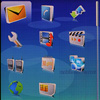 |
 | 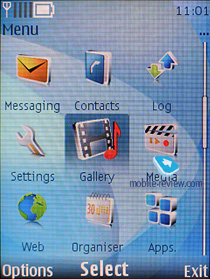 |
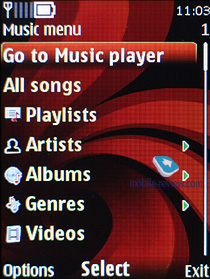 | 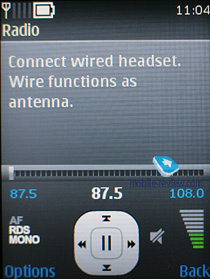 |
The handset boasts a number of themes that substantially change its looks, seem to be well-elaborated, meshing with the handset’s overall image.
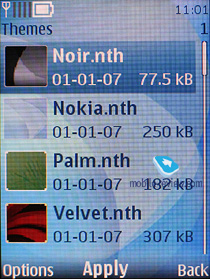 | 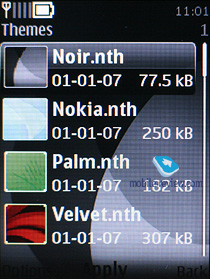 |
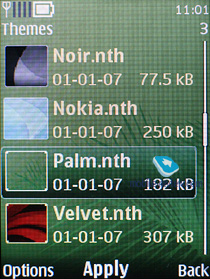 | 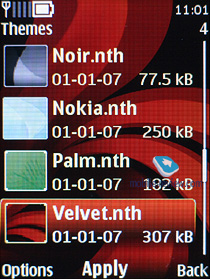 |
 | 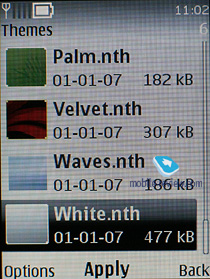 |
The handset comes preinstalled with an array of games: Backgammon II, Golf Tour, Music Guess, Sudoku, Snake III.
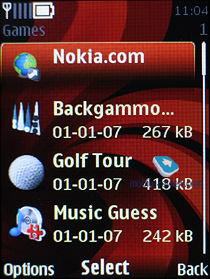 | 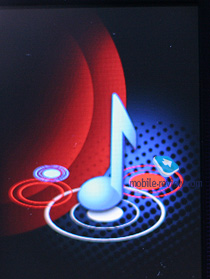 |
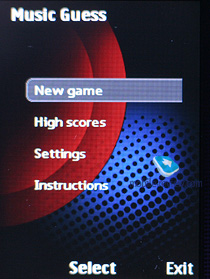 | 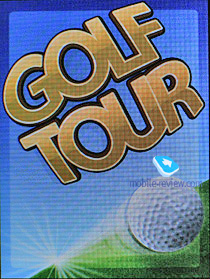 |
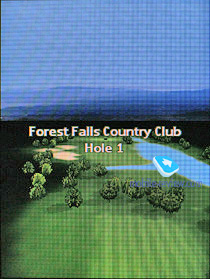 | 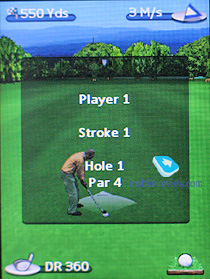 |
 | 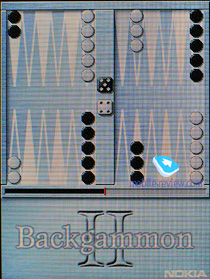 |
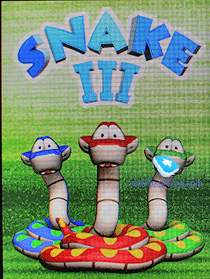 | 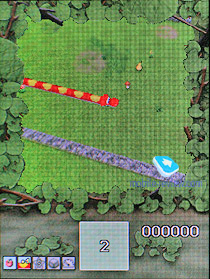 |
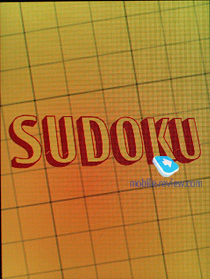 | 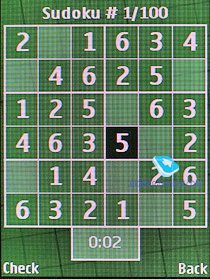 |
The Applications section includes such standard functions like Converter, Opera Mini, World Clock, Yahoo! Go, Widsets, Download!, Flickr, Messenger (Windows Live Messenger). Some markets may also see other applications installed on the 3600 Slide. New Java applications can be uploaded over the air or directly into the handset’s memory (no size limits).
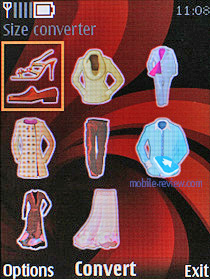 | 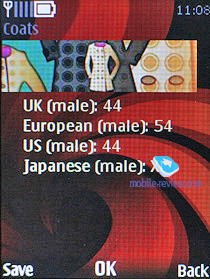 |
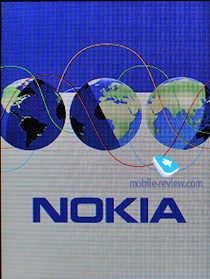 | 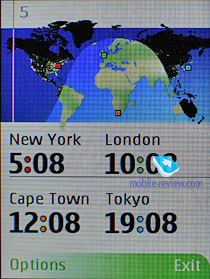 |
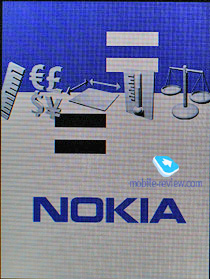 | 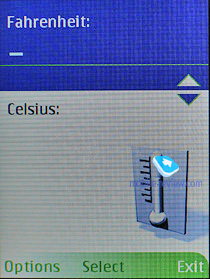 |
Maps – maps are coming to S40 in the same way they are currently available with S60-powered devices, however, they are pretty much pointless on devices with no inbuilt GPS receivers, as we really doubt you will go to all the trouble of connecting an external GPS module. In my opinion, Google Maps would fit the 3600 Slide better. However, solutions carrying a GPS receiver on board will squeeze a lot more out of Nokia’s native application, thankfully, its functionality and design are the same as those found in S60.
 |  |
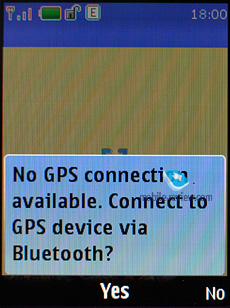 |  |
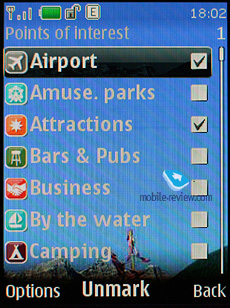 |  |
 |  |
 |  |
 |  |
Impressions
As far as reception quality goes, the 3600 Slide is pretty good – overall it’s no different from other Nokia-branded solutions. The loudspeaker’s volume is average, even lower than that of some other Nokia’s offerings, and occasionally it falls flat in really noisy environments (but, it really depends what tune you currently use for your ring tone). The 3600 Slide’s vibro alert, on the contrary, is nothing to complain about.
The 3600 Slide is Nokia’s first device to enjoy an ambient noise suppression technology – whenever you’ll find yourself talking in a noisy environment, the phone will try to cut a portion of this unwanted interference, so that people on the other end won’t hear it. We took this feat on a test-drive at a really loud party, to have a reference point we also grabbed the Nokia 6500 Slide – so, the difference, as our contact told us, wasn’t all that striking, however he admitted that this technology actually did manage to cut some noise off and our voice sounded clearer overall.
The 3600 Slide’s launch date is scheduled for late summer, when it will arrive with the price tag of 175 Euro, which is a bit too much for this phone, since there is the Nokia 6500 Slide – same class, metallic casing, similar camera and a tad better sales package go for 260-270 Euro these days, so when it will get down to the 220-230 Euro level (which doesn’t seem impossible at all), the gap between the 3600 Slide and 6500 Slide will be pretty marginal. Apparently, the senior model will be withdrawn from the market later this year, but during the first months of its sales, the Nokia 3600 Slide will find a rival in it.
On the other hand, the difference between them isn’t overly tiny, so these two won’t collide directly. People in the know won’t have to make a choice – to them the Nokia 6500 Slide will be the obvious pick; however the average consumer will be more interested in a more affordable and not-so-durable Nokia 3600 Slide. If the 3600 Slide’s price falls down a fair amount, it will have every making of the most popular Nokia-branded slider ever, second to none, bar the Nokia 2680 Slide.









0 Responses to "Review of GSM-handset Nokia 3600 Slide"
Post a Comment